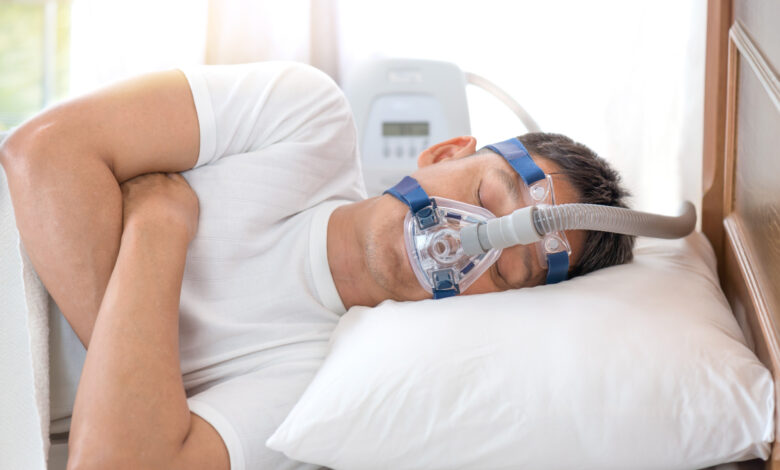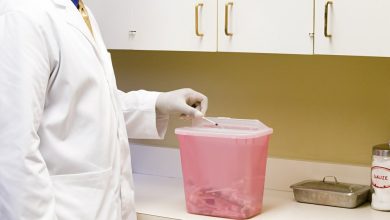How Does a CPAP Machine Work?

Did you know that 6 million people are diagnosed with sleep apnea?
Sleep apnea can be dangerous for your health. There are treatment options available to help alleviate the condition. One of the most common treatments is a CPAP machine.
Many people who use CPAP machines may have questions like, “how does a CPAP machine work?”
Keep reading to learn more about how CPAP machines can help you.
Table of Contents
Overview of CPAP Machine
CPAP Machine is a continuous airway pressure device used to treat sleep apnea. Sleep apnea is a condition where the person cannot maintain an airway during sleep.
The CPAP machine helps keep the airway open by creating a constant airflow. This prevents breathing pauses that characterize sleep apnea. This prevents breathing pauses that characterize sleep apnea. The device is an incredibly beneficial resource for those with sleep apnea.
CPAP machines may also be used to treat other respiratory ailments. This includes chronic obstructive pulmonary disease. Be sure to click here for more information about how the CPAP machine works and how it can help you.
Parts of CPAP Machine
A CPAP machine works by sending a steady stream of pressurized air through a mask that is worn over the nose or mouth. This pressurized air helps to keep the airway open, preventing it from collapsing and allowing the patient to breathe more easily and regularly during sleep.
CPAP machines are commonly used in the treatment of sleep apnea. Several components make up the system. These parts work together to provide effective sleep apnea therapy.
Motor
The motor pressurizes air, drawing it in from the environment. It forces it out of the machine through the hoses. This pressurized air keeps the airways open, primarily treating Obstructive Sleep Apnea (OSA).
The motor in a CPAP machine creates sufficient pressure to keep the airways open. This pressure is adjustable depending on the individual’s medical requirements. It is typically set to range from 4 to 20 centimeters of water (cmH2O) for most people.
The adjustable motor helps ensure that the air is steady and adequate.
Compressor
A CPAP machine works by using a compressor to generate airflow. The compressor is powered by electricity. It pressurizes the air so that it can enter the mask.
Once the air enters the mask, it is pressurized to the appropriate level for treating sleep apnea. The air pressure is then delivered to the patient, who usually breathes.
Masks and Tubes
A CPAP machine sends a steady stream of air through a tube connected to a mask worn on the face. The air pressure is set to the specific breathing needs of the patient.
The mask and tubes used with the CPAP machine are designed to create a comfortable and safe experience for the user. The mask should be changed regularly to keep the system functioning correctly. The tubes should be checked to ensure there are no blockages or kinks.
Humidifier
The humidifier is an attachment to the CPAP machine. It works to humidify the air that is pushed into the CPAP mask by using water vapors. This helps with the comfort of wearing the mask and prevents lips and noses from drying out while using the device.
The patient’s airway remains open throughout the night as moist, humidified air is delivered. This reduces snoring and helps them get a good night’s sleep.
CPAP Mask Types and Usage
Depending on the type of mask selected, the patient may have full or partial coverage of the nose, mouth, and chin, with the air being delivered through a tube that connects the mask to the CPAP machine. The mask used is typically determined by the patient’s individual needs, comfort levels, and lifestyle.
Nasal pillows, full-face masks, and nasal masks are among the most common types of CPAP masks available, each providing various levels of coverage and comfort. Each CPAP mask accommodates different users.
The nasal pillow masks fit just at the nostrils, while the nasal masks cover the entire nose, and the full-face mask covers the nose and mouth. The masks come in various sizes and features depending on the individual’s needs.
CPAP Maintenance Tips
CPAP machines are an effective treatment for several sleep-related illnesses. CPAP maintenance is essential to ensure the best CPAP machine operates appropriately and safely. Tips for maintaining a CPAP machine include regularly cleaning the mask and tubing, keeping the humidifier clean, replacing and cleaning the filter, and examining the machine for any potential wear and tear.
Regularly check your CPAP machine’s settings. Make sure there are no leaks. Everything must be properly connected.
If you have any concerns regarding the machine’s performance, it’s best to consult a qualified healthcare provider. They can help with proper diagnoses and any necessary repairs or replacement parts.
Choose the Right CPAP Machine
When selecting a CPAP machine, it is essential to consider the user’s lifestyle and any potential medical needs or allergies. CPAP machines come in different sizes, designs, and technologies, so it is essential to research and get suitable machines for the user’s needs. CPAP machines have other components, settings, and features that can affect treatment.
When shopping for a CPAP machine, it is essential to consider not only the machine’s features but also any accessories that may be necessary, such as a mask that fits properly, a humidifier to add moisture and a carrying case for travel. As with any health-related item, users should consult their healthcare provider to determine the best device to meet their needs.
Understanding the CPAP Machine
CPAP machines are incredibly simple yet effective tools designed to help those with sleep apnea and other respiratory problems. Understanding how they work is the first step to getting the most out of your CPAP machine. If you haven’t already, talk to your doctor today and invest in a CPAP machine to start experiencing the enhanced quality of life it offers.
If you find this helpful, be sure to visit our website. We have great articles that can give you tips, ideas, and information.




